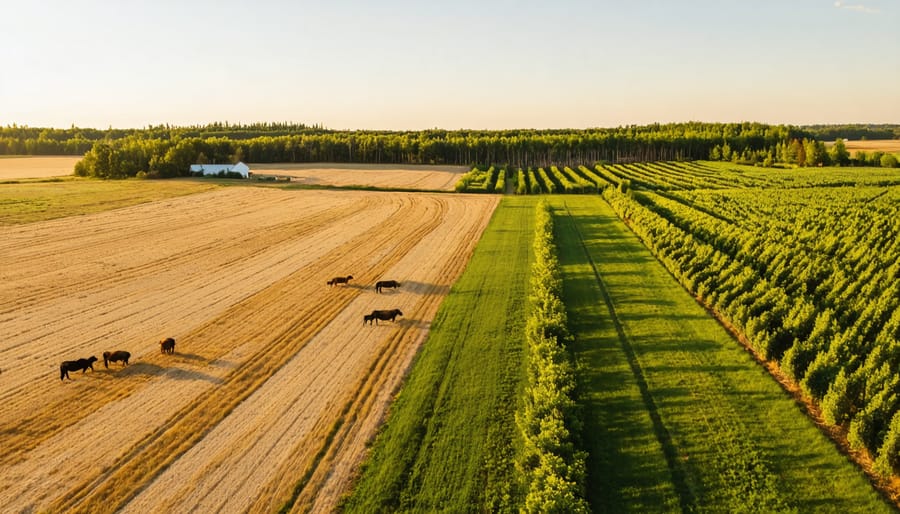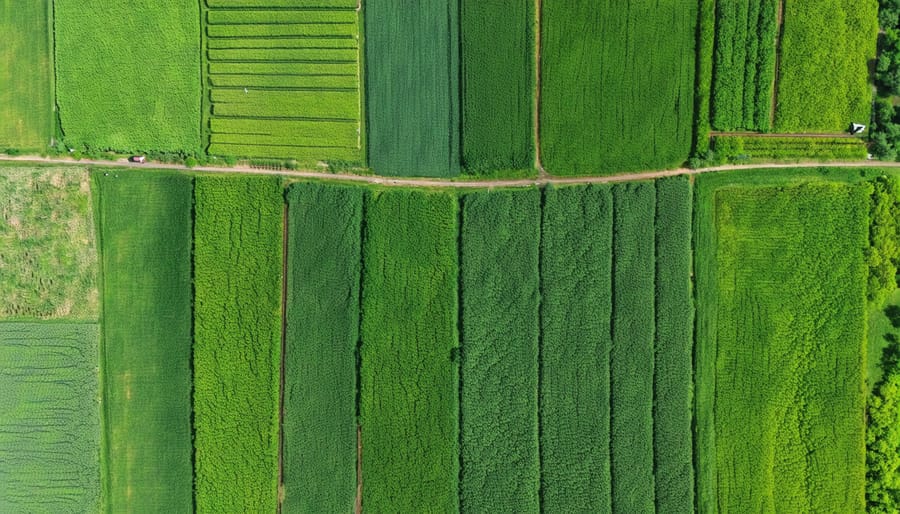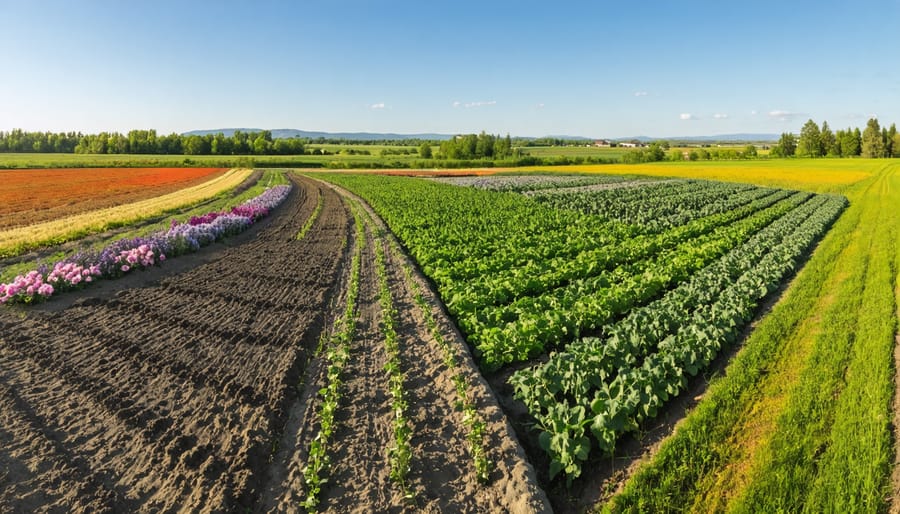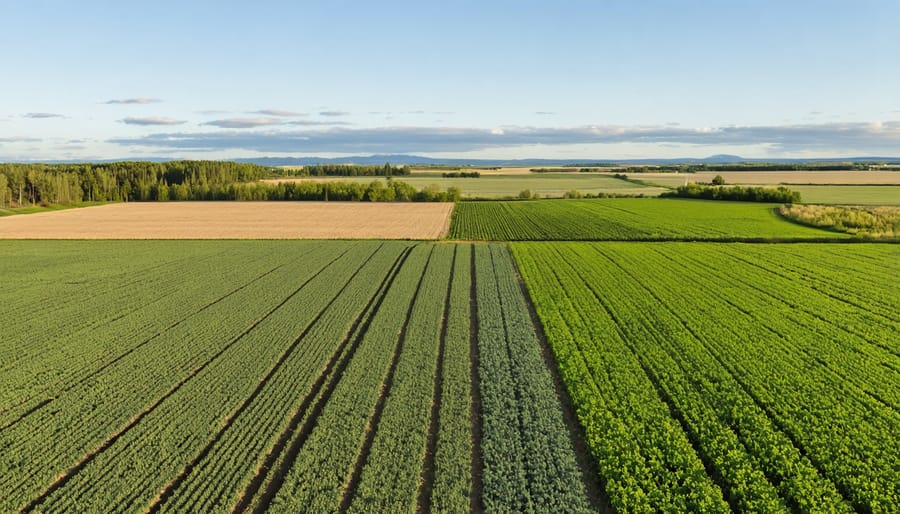Agroforestry careers in Canada are experiencing unprecedented growth, driven by the rising demand for regenerative farming practices and sustainable land management. With average salaries ranging from $45,000 to $85,000 annually, professionals in this field combine traditional forestry with agricultural expertise to create resilient, profitable farming systems. Alberta’s expanding agroforestry sector currently employs over 2,500 specialists across roles including silviculture technicians, ecosystem restoration specialists, and farm system designers.
Recent industry surveys reveal a 40% increase in agroforestry job postings across Western Canada since 2020, with particular demand for experts in indigenous food systems, carbon credit management, and integrated livestock-forestry operations. These positions offer not just competitive compensation but also contribute to climate change mitigation while supporting local food security. Whether you’re an experienced agriculturalist looking to diversify or a newcomer to the field, agroforestry presents a unique opportunity to blend environmental stewardship with sustainable income generation.
Why Agroforestry Jobs Are Booming in Alberta
Climate-Smart Agriculture Initiatives
Several Canadian government initiatives are making agroforestry careers more accessible and financially viable. The Canadian Agricultural Partnership (CAP) offers funding support for farmers transitioning to agroforestry systems, with matching grants of up to $50,000 for eligible projects. In Alberta, the Environmental Stewardship and Climate Change Producer Program provides additional incentives, covering up to 70% of costs for implementing climate-smart agricultural practices.
The Agricultural Clean Technology Program supports job creation through innovation funding, particularly benefiting those working in silvopasture and alley cropping systems. These initiatives have created numerous positions for agroforestry technicians and consultants across the province.
Local agricultural societies and conservation authorities frequently partner with these programs to provide hands-on training and mentorship opportunities. The Growing Forward initiative specifically supports new entrants to agroforestry through educational workshops and start-up assistance.
For Alberta farmers, the Agricultural Training Support Program offers wage subsidies of up to $15 per hour when hiring and training new workers in sustainable agricultural practices, making it easier to transition into agroforestry careers while maintaining financial stability.
Economic Benefits for Farm Diversification
Diversifying farm operations through agroforestry can significantly boost farm income through multiple revenue streams. By integrating trees and shrubs with traditional crops or livestock, farmers can harvest various products throughout the year, reducing their reliance on single-season income. For example, while waiting for timber trees to mature, farmers can generate income from fruit trees, nuts, mushrooms, and medicinal plants.
In Alberta, successful agroforestry operations report earning additional revenue of $5,000 to $15,000 per hectare annually through specialty forest products. The Christmas tree market alone generates substantial seasonal income, with farms earning between $8,000 to $12,000 per acre. Maple syrup production, though less common in Alberta, presents another viable opportunity, with producers reporting returns of up to $40 per tap.
Beyond direct sales, agroforestry systems can reduce operational costs through natural windbreaks, improved soil fertility, and decreased need for chemical inputs. Many farmers also benefit from carbon credit programs and ecosystem service payments, creating passive income streams while contributing to environmental sustainability. These diverse revenue sources help build more resilient farm businesses that can better weather market fluctuations and climate challenges.
Top-Paying Agroforestry Career Paths
Agroforestry System Designers
Agroforestry system designers combine agricultural expertise with landscape architecture to create sustainable integrated farming systems. These professionals work closely with landowners to develop custom plans that maximize land productivity while maintaining ecological balance.
The role requires a bachelor’s degree in agriculture, forestry, or environmental science, with many designers holding master’s degrees in agroforestry or sustainable agriculture. Practical experience in both farming and forestry is highly valued, particularly in Alberta’s unique climate conditions.
Key responsibilities include conducting site assessments, creating detailed design plans, selecting appropriate tree and crop species, and developing implementation strategies. Designers must understand soil science, local ecosystems, and climate patterns to ensure successful system integration.
In Alberta, entry-level designers typically earn $55,000-$65,000 annually, while experienced professionals can command $85,000-$120,000. Additional income opportunities exist through consulting services and project management. The demand for these specialists is growing as more farmers recognize the economic and environmental benefits of agroforestry systems.
Required skills include:
– Strong analytical and problem-solving abilities
– Proficiency in design software
– Knowledge of local agricultural regulations
– Excellent communication skills
– Project management experience
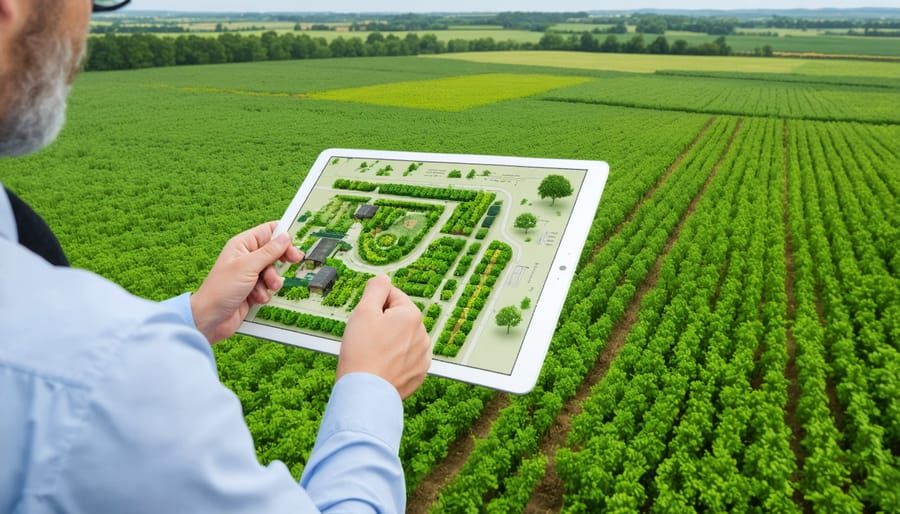
Carbon Credit Specialists
As the carbon market expands across Canada, Carbon Credit Specialists have emerged as vital professionals in the agroforestry sector. These experts help farmers and landowners navigate carbon credit opportunities while maximizing their revenue potential through sustainable land management practices.
In Alberta, specialists typically earn between $65,000 and $95,000 annually, with experienced professionals commanding higher salaries. The role requires a unique blend of forestry knowledge, carbon market expertise, and strong analytical skills. Most successful specialists hold degrees in environmental science, forestry, or agricultural economics, combined with certification in carbon market trading.
Key responsibilities include conducting carbon stock assessments, developing offset project documentation, and helping landowners register their projects with recognized carbon registries. They also serve as liaisons between farmers and carbon buyers, ensuring compliance with protocols while maximizing financial returns.
For those interested in this career path, organizations like the Alberta Carbon Registries offer specialized training programs and networking opportunities. The growing demand for these specialists reflects the increasing value of carbon sequestration in Canadian agriculture.
Sustainable Forestry Consultants
Sustainable forestry consultants play a vital role in helping landowners and agricultural operations integrate trees into their existing farming systems. In Alberta, these professionals typically earn between $65,000 to $95,000 annually, with experienced consultants commanding higher rates. The growing demand for sustainable land management has created numerous opportunities for consultants who specialize in agroforestry systems.
As a consultant, you’ll work with clients to develop comprehensive management plans, conduct site assessments, and provide expertise on species selection and planting strategies. Many successful consultants in Alberta have built their businesses by focusing on specific niches, such as shelterbelts for livestock operations or fruit tree integration for diversified farms.
To establish yourself in this field, you’ll need a combination of formal education in forestry or agriculture, practical experience, and strong business acumen. Professional certification through organizations like the Association of Alberta Forest Management Professionals can enhance your credibility. Many consultants start by working with established firms before branching out on their own, building a network of clients through word-of-mouth referrals and demonstrated success in sustainable land management projects.
Research and Development Positions
Research and development positions in agroforestry offer exciting opportunities for those passionate about advancing sustainable agriculture practices. In Alberta, organizations like the University of Alberta and Agriculture and Agri-Food Canada regularly seek researchers to study tree-crop interactions, soil health, and climate adaptation strategies.
These roles typically require a master’s or doctoral degree in forestry, agricultural science, or related fields. However, research technician positions are available for those with bachelor’s degrees and practical experience. Field researchers earn between $55,000 to $85,000 annually, while senior research positions can command salaries exceeding $100,000.
The Prairie Agroforestry Research Institute in Saskatchewan collaborates with Alberta institutions, offering positions that combine fieldwork with data analysis. Research projects often focus on developing innovative intercropping systems, studying Indigenous forest management practices, and optimizing tree species selection for different agricultural zones.
Industry partners like forestry companies and agricultural technology firms also maintain R&D departments, creating opportunities for researchers to work on practical applications. These positions often include benefits like conference attendance, publication opportunities, and collaboration with international research networks.

Skills and Qualifications Needed
Technical Requirements
Success in agroforestry requires a blend of traditional agricultural knowledge and specialized expertise. A bachelor’s degree in forestry, agriculture, or environmental science serves as a strong foundation, though practical experience with sustainable agroecology practices can be equally valuable.
Essential technical skills include soil science understanding, plant identification, and ecosystem management. Proficiency in GIS (Geographic Information Systems) and data management software is increasingly important, as modern agroforestry operations rely on precision mapping and monitoring tools.
Key certifications that boost employability include:
– Certified Professional Agrologist (P.Ag)
– ISA Certified Arborist
– Environmental Farm Plan certification
– Organic farming certification
Practical skills needed:
– Tree planting and maintenance
– Irrigation system management
– Pest and disease identification
– Climate adaptation strategies
– Basic equipment operation and maintenance
Soft skills are equally crucial:
– Project management
– Communication with stakeholders
– Problem-solving abilities
– Business planning
– Indigenous knowledge integration
Most employers in Alberta value hands-on experience, often requiring 2-5 years of practical work in agriculture or forestry. Continuous learning through workshops and professional development is essential to stay current with evolving practices and technologies.
Education and Training Programs in Alberta
Alberta offers several pathways to build a career in agroforestry through specialized education and training programs. Olds College, a leader in agricultural education, provides a comprehensive Horticulture Technologist Diploma with courses specifically focused on tree management and sustainable agricultural practices. Students can also pursue relevant programs at the Northern Alberta Institute of Technology (NAIT), which offers a Forest Technology Diploma incorporating agroforestry principles.
The University of Alberta’s Faculty of Agricultural, Life & Environmental Sciences delivers advanced education through their Bachelor of Science in Forest Business Management and Master’s programs in Renewable Resources. These programs combine practical skills with scientific knowledge, preparing graduates for leadership roles in agroforestry.
For working professionals, the Alberta Institute of Agrologists offers continuing education opportunities and professional certification programs. Local agricultural societies frequently host workshops and short courses on specific aspects of agroforestry, from silvopasture management to Indigenous forest gardening techniques.
Several organizations, including Agriculture and Agri-Food Canada, provide hands-on training through internship programs and field schools. These practical learning opportunities allow participants to gain real-world experience while building valuable industry connections.
Additionally, the Agroforestry and Woodlot Extension Society (AWES) regularly conducts workshops and field days, offering farmers and land managers practical training in implementing and maintaining agroforestry systems suited to Alberta’s unique climate and conditions.

Success Stories from Alberta Farms
The success of agroforestry in Alberta is best illustrated through the experiences of local farmers who have transformed their operations. Take James and Sarah McKenzie from Red Deer County, who integrated shelterbelts and fruit trees into their cattle operation five years ago. Today, their diversified income streams from timber, fruits, and livestock have created sustainable farm livelihoods that weather market fluctuations.
In Lacombe County, Maria Rodriguez transitioned from traditional grain farming to a silvopasture system. By incorporating hybrid poplar trees alongside grazing areas, she’s created additional revenue through wood products while improving soil health and cattle welfare. Her operation now employs three full-time workers, demonstrating agroforestry’s potential for job creation.
The Wheatland Community Forest Project showcases collaborative success, where five neighboring farms joined forces to develop a 200-hectare food forest system. This initiative now supports twelve full-time positions, including forest managers, harvest coordinators, and value-added product developers.
Peter Thompson, a former oil industry worker, found his calling in specialty mushroom cultivation under his managed forest canopy near Grande Prairie. Starting with just two hectares, his operation has expanded to employ seven people and supply high-end restaurants across Western Canada.
These success stories highlight common threads: careful planning, willingness to learn, and community support. The Alberta Agroforestry Development Centre reports that farms incorporating tree systems show an average 30% increase in long-term profitability compared to conventional operations.
New entrants to agroforestry careers often begin by working alongside established operations. Emily Chen, now a successful forest garden consultant, started as an apprentice at the McKenzie farm before launching her own business. Her story demonstrates how hands-on experience can lead to specialized career opportunities in the sector.
As we’ve explored throughout this article, agroforestry offers diverse and rewarding career opportunities across Alberta and Canada. Whether you’re interested in becoming a forest farm manager, an agroforestry consultant, or a research specialist, the field continues to grow alongside increasing demand for sustainable agricultural practices.
The path forward is clear: start by identifying which aspect of agroforestry aligns with your interests and skills. Consider pursuing relevant education through programs offered at institutions like Olds College or the University of Alberta, or gain hands-on experience through internships and apprenticeships with established agroforestry operations.
Network with local farming communities and join professional organizations like the Canadian Agroforestry Network to stay connected with industry developments and job opportunities. Many successful agroforesters in Alberta started their careers by volunteering or working part-time on existing operations to build practical experience.
Remember that government agencies, conservation authorities, and private consulting firms regularly seek professionals with agroforestry expertise. The combination of traditional farming knowledge with sustainable forestry practices makes you valuable in today’s evolving agricultural landscape.
Take the first step today by reaching out to local agroforestry practitioners, attending workshops, or exploring educational programs. Your journey toward a fulfilling career in agroforestry can begin right here in Alberta, contributing to both environmental sustainability and economic growth in our agricultural sector.


